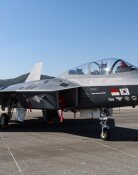Korean Satellite Launch Is a Success
Koreasat 5 (also dubbed Mugunghwa 5), South Koreas first combined civil and military communications satellite, was successfully launched on 12:27 p.m., August 22 (local time) from the South Pacific along the Equator at 154 degrees west longitude, according to the KT and Agency for Defense Development (ADD).
A control tower in Puccino, Italy succeeded in communicating with Koreasat 5 at 1:42 p.m., an hour and a quarter after the launch. Koreasat 5 will gradually raise its orbit three times as it revolves around the earth. Then Koreasat 5 will approach Geostationary earth orbit (GEO) of 35,786 km high in nine days and replace Koreasat 2 which was launched in 1996.
Koreasat 5, which was so named because of the representative meaning of four, which means death in Chinese characters, was launched on a ship in lieu of a ground launch pad. It was upon the judgment that it would be advantageous considering safety, environment and the problems pertaining to international law, KT explained.
Now, Korea is able to offer satellite broadcasting and data services to east China, Japan, Taiwan and Philippines as well as the Korean peninsula, owing to the successful blast-off.
Among 24 relay stations which are loaded to Koreasat 5, 12 systems will replace the role of Koreasat 2 and the other dozen will supply Korean contents to Asia and build network of communication between global Korean enterprises and the head office of KT, an official of KT said.
Koreasat 5 is expected to contribute a lot to increase the war capability of ROK forces, as it possesses the first communication satellite in its history. The main task of Koreasat 5 as a military communication satellite is to interconnect the ROK forces by satellite in order to devastate main spots of opponents precisely. 12 military relay systems are especially designed and set up in Koreasat 5 to prevent taps or radio jams.
The communication of ROK forces has mostly relied on cable communication using underground optical cable, relay systems placed on high ground, or radio. These ground-based communication systems are vulnerable to natural disasters and have limitations of distance. However, the satellite enables the force to communicate in any method like sound and graphics, and get no effect from the attack of the opponent as well as nature disasters. Moreover, it can reach 6,000km and send data to the Malacca Strait, the biggest transport route of oil next to the Malay peninsula to the west, and Pacific International Date Line to the east.
The military authorities can communicate simultaneously with ROK forces dispatched within this area, or naval warships and submarines in operation. Furthermore, Koreasat 5 will be linked to a C4I (Command, Control, Communications, Computers and Intelligence) system, which will bond main forces of the land, sea and air forces together until 2011, and will contribute to future Network Centric Warfare (NCW). The military relay systems of Koreasat 5 will be in operation from October 2007, when it finishes tests and other military equipment is ready.
kimsunmi@donga.com ysh1005@donga.com







